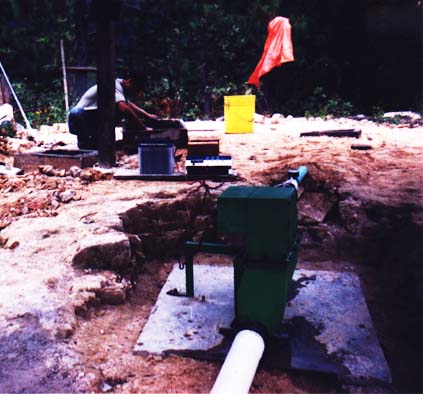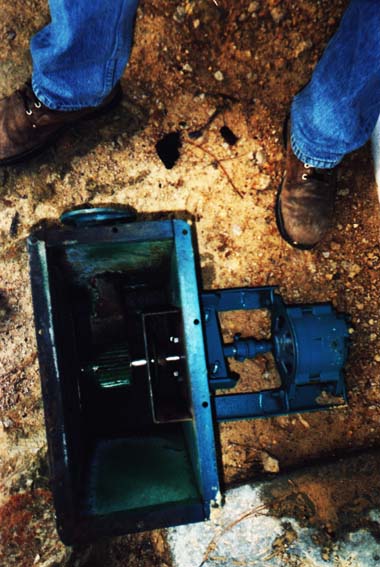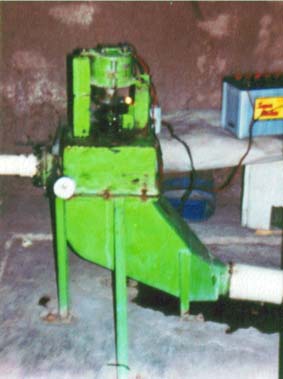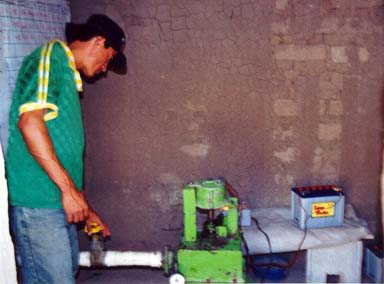FAO / Bart van Campen and Bert van der Plas, Honduras
I knew Bart van Campen via YES-DC, a Dutch network of young people interested in energy issues in developing countries. In 1997, he went to Honduras to work for the FAO. I supported him by answering his questions, sending technical books, and by selling a complete charger and charge indicators. In 2001, his successor Bert van der Plas sent me the report printed below and in 2003, he sent me some more pictures and reports.
Firefly projects in Honduras
One of FAO’s field projects on rural development (PROLESUR) has introduced two firefly demonstration projects in its project area (Lempira - a department in the northwest of Honduras along the border with El Salvador) as part of its strategy to make multiple use of water. The first project was implemented in Quelepa in 1998 and the second one was implemented in Cacahuatal one year later. Experiences with these projects have been valuable and FAO has the intention to develop this technology in Honduras.
The site is centrally located in Quelepa. This firefly project was integrated in an irrigation system (8 manzanas, 1 manzana = 0.697 ha), which was implemented at the same time. The whole system is owned by various family members and was partly financed by them and the FAO field project. Main costs of the project were related to the irrigation system (75,000 lempiras or lps, in 2001: ca. 15.6 lps/US$). The required changes of the irrigation system and the additional firefly system costs were 10,000 lps.. The turbine was locally made in a workshop close to the site (5,000 lps.).
Organizational aspects formed an imported part of the project and consisted of the organization of the legal part (use of the water source, watershed management, etc.), organization and training for the implementation of the civil works, organization and training about use, management and maintenance of the system and about the use of the water (irrigation and generation of energy).
The penstock is designed for a water flow of 5 l./s. and has a netto head of 12 meters; more than enough to provide energy to charge batteries with the firefly system.
The hydroelectric plant provided electricity for the four families who partly owned the plant and the service of charging batteries was also sold to families around Quelepa who paid 12 Lps. for this service. The users use the electricity mainly for lighting purposes (some also have a radio/TV).
Problems
Main problem was the protection of the alternator against incoming water. This was solved by adjusting the seal and by removing the ventilator, as it seemed that this caused the problem.
Another difficulty was to obtain all the required electronic components for the control system. Using alternative components with the same function solved this. The same difficulty occurred with the charge indicators of the batteries.
The installation in the houses seemed of poor quality as quite some families reported burned fuses and low lifespan of the CFL.
A more serious problem was encountered in the water intake area. It was noted that this area filled rapidly with sediment due to lacking watershed management. A plan for watershed management was implemented to improve the situation.

The Quelepa site.

Quelepa charger seen from
below



